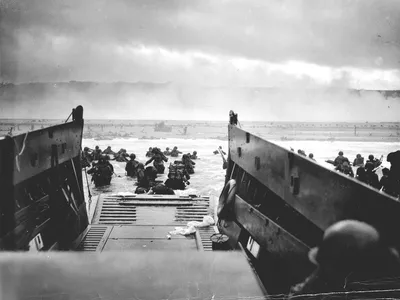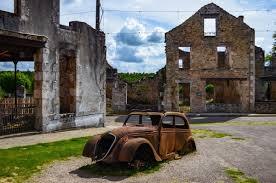Don't wanna be here? Send us removal request.
Text
Cabinet War Rooms: London, UK




During World War II, a network of basement offices in Whitehall served as the hub of Britain’s wartime operations. Known as the Cabinet War Rooms, this underground complex was used by key government officials, military leaders, and Prime Minister Winston Churchill. In the aftermath of World War I, military planners anticipated up to 200,000 casualties from bombings in the first week of a future conflict. Plans for evacuating the Prime Minister, cabinet, and essential staff from London were developed as early as the 1920s. However, concerns about Londoners feeling abandoned and the logistical challenges of evacuation led to the search for an emergency shelter in central London. In June 1938, the New Public Offices building was chosen due to its proximity to Parliament, its robust steel framework, and its expansive basement. This basement, equipped with boards that humorously indicated the weather during air raids, was reinforced with a concrete slab up to three meters thick by December 1940. Despite this, the building was vulnerable to any bomb larger than 500 pounds (227 kg). The best protection was the site’s secrecy. Adaptations were made to the basement to provide meeting spaces for the War Cabinet during air raids and to house a military information center centered around a ‘Map Room’. This room collected crucial information for King George VI, Prime Minister Churchill, and the armed forces. The Cabinet War Rooms became fully operational on August 27, 1939, just before Britain declared war on Germany. Churchill’s War Cabinet met here 115 times, particularly during the Blitz and the subsequent German V-weapon attacks. The rooms operated around the clock until August 16, 1945, when the Map Room’s lights were turned off for the first time in six years. The rooms were opened to the public by IWM in 1984 and remain open for visitors today.
“A Short History of the Cabinet War Rooms.” Imperial War Museums, n.d. https://www.iwm.org.uk/history/a-short-history-of-the-cabinet-war-rooms.
“Churchill War Rooms.” International Churchill Society, July 30, 2021. https://winstonchurchill.org/visit/churchill-war-rooms/.
0 notes
Text
Yalta Conference: Yalta, Crimea



The Yalta Conference, held from February 4 to 11, 1945, in Crimea, was a crucial World War II meeting where U.S. President Franklin D. Roosevelt, British Prime Minister Winston D. Churchill, and Soviet Premier Joseph Stalin made pivotal decisions regarding the war and the postwar order. The Allied leaders convened with Europe’s victory almost secured but with uncertainty about the war in the Pacific. To gain Soviet support against Japan, Roosevelt and Churchill negotiated with Stalin, promising the Soviets a sphere of influence in Manchuria after Japan’s defeat. This included control over southern Sakhalin, a lease on Port Arthur (now Lüshunkou), involvement in the Manchurian railroads, and the Kurile Islands. This agreement was a key outcome of the conference. The discussions also covered the future of Germany, Eastern Europe, and the United Nations. They agreed on France’s role in postwar German administration and that Germany would bear some reparations responsibility. The U.S. and Britain accepted that Eastern European countries near the Soviet Union should be friendly to Soviet interests, while the Soviets pledged free elections in liberated areas. A declaration on Poland included provisions for Communist participation in its government. For the United Nations, the leaders approved an American plan giving veto power to the five permanent Security Council members, including France. Initially, the Yalta agreements were seen positively, symbolizing continued U.S.-Soviet cooperation. However, this optimism diminished after Roosevelt’s death on April 12, 1945. President Harry S. Truman’s administration soon clashed with the Soviets over Eastern Europe and the UN, leading to criticism of Roosevelt’s negotiations. Critics accused him of conceding too much to the Soviets, despite their own significant concessions. Now looking forward it has now become a museum. Each summer, it also hosts the traditional “Russian Ball,” organized by a Yalta historical dance club.
U.S. Department of State, n.d. https://history.state.gov/milestones/1937-1945/yalta-conf#:~:text=At%20Yalta%2C%20Roosevelt%20and%20Churchill,of%20influence%20in%20Manchuria%20following.
Collector, Print. “Yalta Conference of Allied Leaders, World War II, 4-11 February 1945....” Getty Images, n.d. https://www.gettyimages.com/detail/news-photo/yalta-conference-of-allied-leaders-world-war-ii-4-11-news-photo/463899845?adppopup=true.
0 notes
Text
Omaha Beach, France
On June 6, 1944, this battle marked the beginning of Operation Overlord, the Allied campaign to liberate Nazi-occupied Western Europe. Omaha Beach was one of five key landing zones along the Normandy coast in France, with the others being Utah, Gold, Juno, and Sword. This particular beach was assigned to U.S. forces, specifically the 1st and 29th Infantry Divisions. The German defenses at Omaha Beach were particularly strong, featuring concrete bunkers, machine gun nests, and artillery positions, along with underwater obstacles and mines. The attack began at dawn on June 6, and U.S. troops faced fierce resistance from German forces who had a commanding position on the cliffs and in bunkers overlooking the beach. The initial landings were chaotic and resulted in heavy casualties. Landing crafts came under heavy fire as they approached the shore, causing significant losses among the soldiers. Many were killed or wounded as they tried to land and scale the cliffs to neutralize the German defenses. Omaha Beach experienced some of the highest casualties of the D-Day invasion, with around 2,400 American soldiers killed, wounded, or missing by the end of the day. The difficult terrain and intense German resistance made securing the beach especially challenging. Despite these hardships, U.S. forces managed to secure Omaha Beach by the end of June 6. This victory was crucial for establishing an Allied foothold in France and beginning the process of liberating Western Europe from Nazi control. Today, the events at Omaha Beach are remembered as a symbol of courage and sacrifice. The American Cemetery at Normandy, located on a bluff overlooking the beach, honors those who lost their lives there. The beach and surrounding areas are preserved as historic sites, attracting many visitors each year and serving as a poignant reminder of the sacrifices made for Allied victory in Europe.




“Omaha Beach.” Encyclopædia Britannica, July 15, 2024. https://www.britannica.com/place/Omaha-Beach.
“ U.S. Reinforcements Land on Omaha Beach during the Normandy D-Day Landings near Vierville-Sur-Mer, France, June 6, 1944.” Reuters, n.d. https://www.reuters.com/graphics/DDAY-ANNIVERSARY-HISTORY/010092LL3CW/.
0 notes
Text





The Hiroshima Peace Memorial: Hiroshima, Japan
The Hiroshima Peace Memorial (Genbaku Dome) is the only structure left standing near the hypocenter of the atomic bomb dropped on August 6, 1945. Preserved in its immediate post-explosion state, this ruin symbolizes both the catastrophic power of nuclear weapons and the hope for global peace and the abolition of nuclear arms. The site, covering 0.40 hectares in central Hiroshima, consists of the Genbaku Dome within the remnants of the Hiroshima Prefectural Industrial Promotional Hall, built in 1914. A 42.7-hectare buffer zone surrounds the site, including Hiroshima Peace Memorial Park. The significance of the Genbaku Dome lies more in its symbolic impact than its architectural or aesthetic value. It stands as a stark reminder of humanity's destructive potential and a beacon for lasting peace. The dome's preservation as a ruin ensures its external and internal integrity, with structural elements maintained as they were after the bombing. The site remains visible from outside its perimeter fences, and the surrounding buffer zone functions as a memorial for atomic bomb victims and a symbol of global peace. Conservation efforts have focused on minimal reinforcement with steel and synthetic resin to preserve the dome's post-bomb condition. The Hiroshima Peace Memorial retains its original location, form, design, and materials, maintaining both functional and spiritual authenticity as a site dedicated to peace and nuclear disarmament. Under the 1950 Japanese Law for the Protection of Cultural Properties, the Hiroshima Peace Memorial is designated as a historic site managed by Hiroshima City with oversight from the Hiroshima Prefectural Government and the Japanese government. Daily maintenance is managed by the Hiroshima City Park Management Office, with a detailed condition survey conducted every three years. A city beautification plan regulates building height, alignment, wall colors, materials, and signage in the vicinity to maintain the site's symbolic significance. In 2007, the protection of Peace Memorial Park was enhanced with its designation as a Place for Scenic Beauty.
Centre, UNESCO World Heritage. “Hiroshima Peace Memorial (Genbaku Dome).” UNESCO World Heritage Centre. Accessed 2024. https://whc.unesco.org/en/list/775/.
Courtesy of University of Utah - J. Willard Marriott Library via Mountain West Digital Library.
0 notes
Text



On June 10, 1944, during World War II, the village of Oradour-sur-Glane, France, became the site of a horrific massacre. Oradour-sur-Glane was a small, rural village in the Haute-Vienne department in central France. At the time of the massacre, it had a population of around 600 residents, mostly farmers and artisans. The SS soldiers rounded up the entire population and separated them by gender in the market square. The German military executed hostages and imprisoned those suspected of supporting or sympathizing with the resistance movement in concentration camps. Overall, the scale of violence and civilian casualties was extreme. Only seven villagers survived the massacre—six men and one woman—each of whom was injured. Around fifteen additional residents either managed to flee before the massacre began or were hiding. After this tragedy, the village was destroyed and left in ruins. The massacre at Oradour-sur-Glane became a symbol of Nazi brutality. After the troops departed from Oradour-sur-Glane, Diekmann assembled his officers and non-commissioned officers and instructed them to remain silent about the killings. To address growing public anger and prevent the Vichy government from aligning with the Allies, the German Army Commander-in-Chief in the West ordered an investigation into the massacre. In January 1945, Okrent suspended the investigation, determining that “military concerns justified the retaliation.” In 1953, a French military court in Bordeaux put 21 former members of the 2nd SS Division on trial for their roles in the atrocities at Oradour-sur-Glane and Tulle. Fourteen of the accused were ethnic Germans from Alsace. The court found 20 of them guilty, sentencing two to death and the others to prison terms ranging from five to 20 years. However, amnesties and pardons led to the release of all the convicted, including those sentenced to death, within five years of the trial. In 1981, the German Democratic Republic arrested Heinz Barth, a former SS Sergeant and platoon commander whose unit had participated in the shooting of Oradour-sur-Glane’s men. Barth was sentenced to life in prison by an East Berlin court. He was released in 1997 and passed away in 2007 at the age of 86. Oradour-sur-Glane will always be significant and ensure remembrance of the victims of that night.
“Oradour-Sur-Glane: An Echo from History.” The History Press, March 29, 2024. https://thehistorypress.co.uk/article/oradour-sur-glane-an-echo-from-history/.
United States holocaust memorial museum. https://encyclopedia.ushmm.org/content/en/article/oradour-sur-glane.
1 note
·
View note